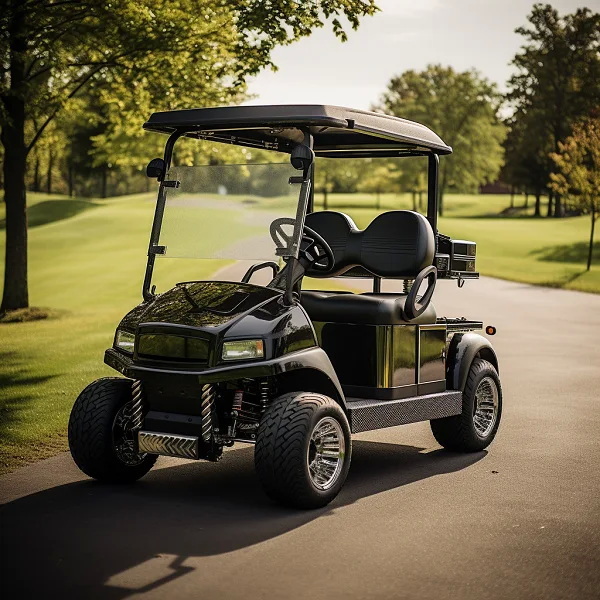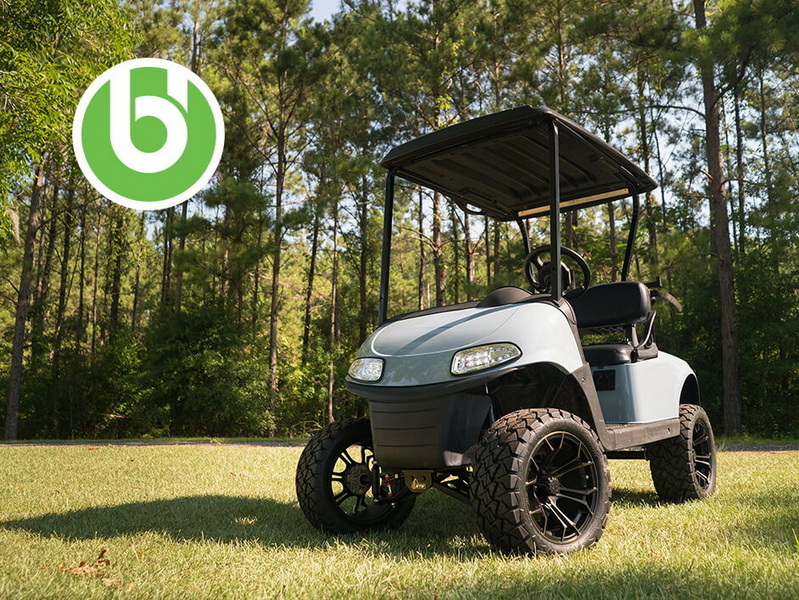Content Menu
● Preparing Your Electric Golf Cart for Towing
>> Disconnect the Battery
>> Set the Golf Cart to Neutral
>> Engage Tow Mode
>> Check Tire Pressure
>> Secure Loose Items
>> Inspect Brakes and Suspension
● Choosing the Right Towing Equipment
>> Golf Cart Trailer
>> Tow Bar
>> Flatbed Truck
● Loading the Golf Cart
● Securing the Golf Cart
● Best Practices for Towing
● Special Considerations for Electric Golf Carts
>> Tow Mode
>> Speed Limitations
>> Distance Considerations
● Unloading the Golf Cart
● Legal Considerations
● Maintenance After Towing
● Conclusion
● FAQ
>> 1. Can I tow an electric golf cart with a regular car?
>> 2. How do I put my electric golf cart in tow mode?
>> 3. Should I tow a golf cart facing forward or backward?
>> 4. What is the maximum speed for towing a golf cart?
>> 5. Do I need to disconnect the battery when towing an electric golf cart?
Electric golf carts have become increasingly popular for both recreational and practical uses. However, there may be times when you need to transport your electric golf cart over longer distances or to a different location. In these situations, knowing how to properly tow an electric golf cart is essential for ensuring the safety of both the cart and other road users. This comprehensive guide will walk you through the process of safely towing an electric golf cart, from preparation to execution, and provide valuable tips to make the experience as smooth as possible.

Preparing Your Electric Golf Cart for Towing
Before you begin the towing process, it's crucial to properly prepare your electric golf cart. This preparation will help prevent damage to the cart and ensure a safe towing experience.
Disconnect the Battery
The first step in preparing your electric golf cart for towing is to disconnect the battery[2]. This prevents any electrical issues during transportation and helps preserve the battery life. Locate the main negative battery cable connection and unhook it using a wrench or pliers if available[4].
Set the Golf Cart to Neutral
Place the shifter on the FNR (Forward-Neutral-Reverse) switch in the neutral position[4]. If your cart has a rocker switch for forward and reverse, set it to the middle position.
Engage Tow Mode
Many electric golf carts have a "tow mode" or "run/tow" switch[4]. This switch is typically located under the seat or in the battery compartment. Engaging tow mode disengages the motor and prevents damage to the electrical system during towing.
Check Tire Pressure
Ensure that all tires on your golf cart are properly inflated[2]. Correct tire pressure is essential for maintaining stability during towing and preventing unnecessary wear on the tires.
Secure Loose Items
Remove or secure any loose items on your golf cart, such as golf bags, accessories, or personal belongings[2]. This prevents items from shifting or falling off during transit.
Inspect Brakes and Suspension
Check the brakes and suspension system of your golf cart to ensure they are in good working condition[2]. Any issues should be addressed before towing to prevent potential problems on the road.

Choosing the Right Towing Equipment
Selecting the appropriate towing equipment is crucial for safely transporting your electric golf cart. Here are some options to consider:
Golf Cart Trailer
A trailer specifically designed for golf carts is often the best choice for towing[2]. These trailers are built to accommodate the size and weight of golf carts and typically come with features like built-in ramps for easy loading.
Tow Bar
A tow bar can be used to connect your golf cart directly to the towing vehicle[2]. This method is suitable for shorter distances and requires less equipment than a trailer.
Flatbed Truck
For those who own or have access to a flatbed truck, this can be an excellent option for transporting a golf cart[2]. The flat surface provides a stable platform for the cart during transit.
Loading the Golf Cart
Once you've chosen your towing method, it's time to load the golf cart. Here's a step-by-step guide:
1. Position the trailer or towing vehicle on a flat, level surface[3].
2. If using a trailer with a ramp, lower the ramp and secure it properly.
3. Set the golf cart to neutral gear[3].
4. Slowly drive or winch the golf cart onto the trailer or truck bed.
5. Center the golf cart on the trailer or truck bed for optimal weight distribution.
Securing the Golf Cart
Properly securing your golf cart is crucial for safe transportation. Follow these steps:
1. Use heavy-duty straps or tie-downs to secure the golf cart[3].
2. Attach the straps to designated tie-down points on both the golf cart and the trailer or truck bed.
3. Ensure the straps are tight and there is no slack.
4. Double-check all connections and tightness before hitting the road.
Best Practices for Towing
When towing an electric golf cart, keep these best practices in mind:
- Drive at a moderate speed, avoiding sudden stops or sharp turns[3].
- Increase your following distance to allow for longer stopping times.
- Be mindful of the additional length and weight when changing lanes or merging.
- Periodically check the security of your load during your journey.
- Monitor your vehicle's temperature gauge to ensure it's not overheating due to the additional towing weight.
- Carry basic tools and spare parts in case of any issues during the trip.
- Familiarize yourself with local towing laws and regulations.
Special Considerations for Electric Golf Carts
Electric golf carts require some special attention when towing:
Tow Mode
Many electric golf carts have a "tow mode" or "neutral" setting[5]. This disengages the motor and prevents damage to the electrical system during towing. Consult your golf cart's manual for the exact location and operation of this feature.
Speed Limitations
It's crucial to maintain a moderate speed when towing an electric golf cart. Most manufacturers suggest not exceeding speeds of five to eight miles per hour while towing[4]. Higher speeds can lead to excessive heat generation in the motor, potentially causing damage.
Distance Considerations
The longer the distance you tow the golf cart, the higher the risk of heat buildup[4]. If you're towing over a long distance, consider periodic stops to allow the cart to cool down.
Unloading the Golf Cart
When you've reached your destination, follow these steps to safely unload your golf cart:
1. Park on a flat, level surface[2].
2. Set the parking brake on your towing vehicle.
3. Remove all straps and tie-downs.
4. If using a trailer with a ramp, lower and secure the ramp.
5. Slowly and carefully drive or winch the golf cart off the trailer or truck bed.
Legal Considerations
Before towing your electric golf cart, it's important to be aware of any legal requirements or restrictions in your area. Some key points to consider include:
- Ensure your towing vehicle has the appropriate towing capacity for your golf cart and trailer.
- Check if you need any special permits or licenses for towing.
- Verify that your trailer meets all safety requirements, including proper lighting and signaling equipment.
- Be aware of any restrictions on towing golf carts on public roads in your area.
Maintenance After Towing
After towing your electric golf cart, it's important to perform some basic maintenance:
1. Inspect the cart for any damage that may have occurred during transport.
2. Check the tire pressure and adjust if necessary.
3. Reconnect the battery and ensure all electrical systems are functioning properly.
4. Test the brakes and steering to ensure they're working correctly.
5. If the cart was towed over a long distance, consider having it serviced to check for any potential issues.
Conclusion
Safely towing an electric golf cart requires careful preparation, the right equipment, and adherence to best practices. By following the steps outlined in this guide, you can ensure that your golf cart arrives at its destination safely and in good condition. Remember to always prioritize safety, follow local regulations, and consult your golf cart's manual for specific instructions related to your model. With proper care and attention, towing your electric golf cart can be a straightforward and stress-free experience.

FAQ
1. Can I tow an electric golf cart with a regular car?
Yes, you can tow an electric golf cart with a regular car, provided the car has sufficient towing capacity and the proper towing equipment is used[2]. Always check your vehicle's towing capacity before attempting to tow a golf cart.
2. How do I put my electric golf cart in tow mode?
Most electric golf carts have a switch or lever to engage tow mode[5]. Consult your golf cart's manual for the exact location and operation of this feature. When in tow mode, the cart should roll freely when pushed.
3. Should I tow a golf cart facing forward or backward?
It's generally recommended to tow a golf cart facing forward[2]. This orientation provides better stability and reduces the risk of damage to the cart's body or components during transit.
4. What is the maximum speed for towing a golf cart?
Most manufacturers recommend not exceeding speeds of 5-8 miles per hour when towing an electric golf cart[4]. Higher speeds can lead to excessive heat generation in the motor, potentially causing damage.
5. Do I need to disconnect the battery when towing an electric golf cart?
Yes, it's highly recommended to disconnect the main negative battery cable connection before towing an electric golf cart[4]. This prevents any electrical issues during transportation and helps preserve the battery life.




















































